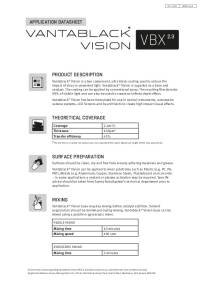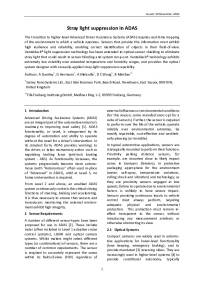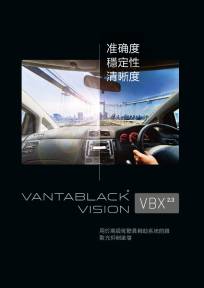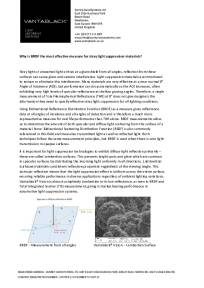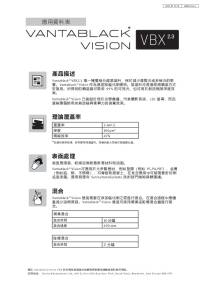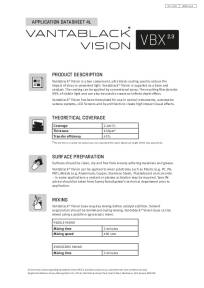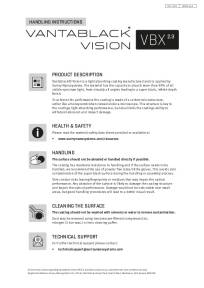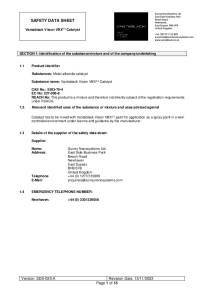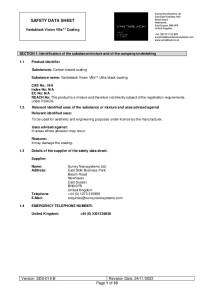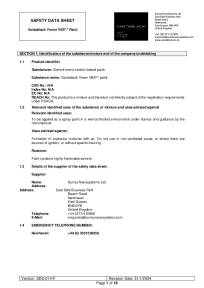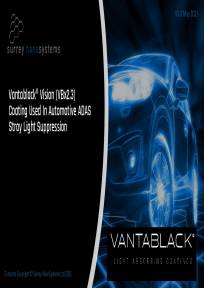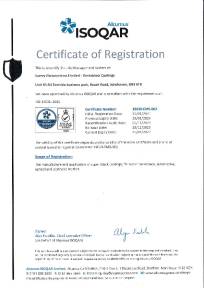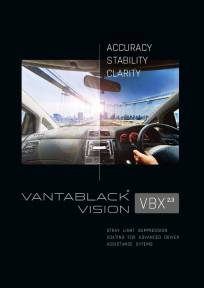
Automotive Qualified Optical Black Paint
Vantablack Vision
Advanced Driver Assistance Systems (ADAS) demand new levels of performance and reliability from optical sensors, particularly where autonomous functionality is desired. These systems must maintain the ability to recognise critical situations whatever the driving conditions, and remain unaffected by stray light that could even momentarily blind sensors with potentially devastating consequences.
Vantablack Vision is an economical, nanomaterial free, ultra-low fogging black paint that minimises or eliminates the effects of stray light in ADAS applications such as camera shielding and Head Up Displays. Vantablack Vision Formulation ensures performance is maintained even under the most demanding conditions.
Cameras
In modern vehicles, cameras have taken over functions such as distance metering and maintenance, object recognition, lane-departure warning and traffic sign recognition amongst many others. These optical systems are frequently subjected to unfavourable lighting conditions, resulting in unwanted stray-light. This stray light degrades system performance, causing veiling, glare and artefacts that are familiar to many photographers. The trend towards wider field of view cameras for enhanced functionality further increases the challenge posed by stray-light and demands the use of superior stray-light management technologies (SLMT)™ to ensure captured images reflect reality. Vantablack Vision applied to camera glare shields minimises or eliminates these stray-light effects, ensuring the optical system remains compliant with critical automotive safety requirements.
BRDF
Using Bidirectional Reflectance Distribution Function (BRDF) as a measure gives reflectance data at all angles of incidence and all angles of detection and is therefore a much more representative measure for real life performance than THR alone. BRDF measurements allow us to determine the amount of both specular and diffuse light scattering form the surface of a material.
Application Training Video & Data Sheets
Application training video for Vantablack Vision available on request, please contact us for more information. Technical data sheet download links are at the bottom of this page.
中文下載在頁面底部

